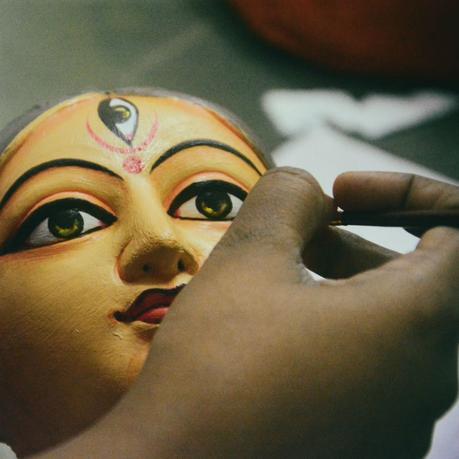
Just as time itself is long, winding and ever changing, so too is the world of art. Though many will inevitably trace the cultures and trends of the artistic world to disciplines such as the Swiss-born Dadaism and German Surrealism, this tapestry winds back long before we began recording and cataloging these various forms.
So, in an attempt to truly appreciate the worlds of personal expression that we have been blessed with throughout time and culture, let us take a step back, and acknowledge the ancient cultures that have inevitably become a source of inspiration and awe for many movements today.
Australia
While we often see the indigenous art of Australia depicted in very specific styles, blending strikingly vivid colouring with an almost surreal approach to forms and ideas, their rich artistry has taken many forms over the last 30,000 years. The surviving examples of prehistoric Aboriginal art are predominantly found as rock paintings, due to the fact that much of the cultures art has historically been transitory in nature.
These impermanent works have often taken the forms of sand art and body painting, and have been used to illustrate various areas, places, and totems of significance to their communities. These forms of art are still practiced today, and have become increasingly sort after by art collectors and history enthusiasts alike.
To experience these contemporary Indigenous pieces for yourself, there are an abundance of online galleries and exhibitions such as http://mandelartgallery.com.au/ that have an extensive array of works from a wide variety of artists across Australia. However, as with the work of all cultures listed, for those that are hoping to own these pieces themselves, it’s always necessary to ensure that the artists are being compensated fairly for their work by whichever distributor you decide upon.
The Americas
Unlike the Indigenous arts of Australia, some of the preferred artistic methods of Native Americans have allowed for a variety of examples that have survived through time. Known predominantly for their ceramics, some tribes would create usable materials through the arduous manual process of pounding clay into a powdered form before removing each found impurity by hand. These processes, at the hands of many different tribes working in a variety of disciplines, would be used to create beautiful pottery, incense burners, and even effigies to name just a few.
This art form has its roots dating back to over 7500 years ago, and with many examples surviving into the present day, they have given researchers a valuable insight into pre-Columbian Indigenous culture.
China (Neolithic Cultures)
Another culture that has seen ancient artistry survive in the form of pottery and ceramics, China’s Neolithic period has been studied with a great deal of interest, with several different forms of clay art and relics being found in areas such as the Yellow River basin, and the sites of graves from the era. Unlike those found in dwellings and homes, the pottery that has been found at grave sites has consistently been shown with linear compositions of red and black pigment, which is an early example of a brush being used for this style.
Other examples from this period have been found in the form of jade carvings. However, much of this process of carving stones and sturdier materials was more predominantly used in the creation of intricate tools and weapons.
This may not be a definitive exploration by any means, but hopefully it has given you a slight look into the arts of cultures that predate many of the artistic methods that we take for granted today. The most important idea we can leave you with is that, for those that are willing to delve a little deeper, there is an abundance of different artistic movements and cultures, that the online world freely offers a wealth of knowledge about.
It’s certainly worth the time.
**

